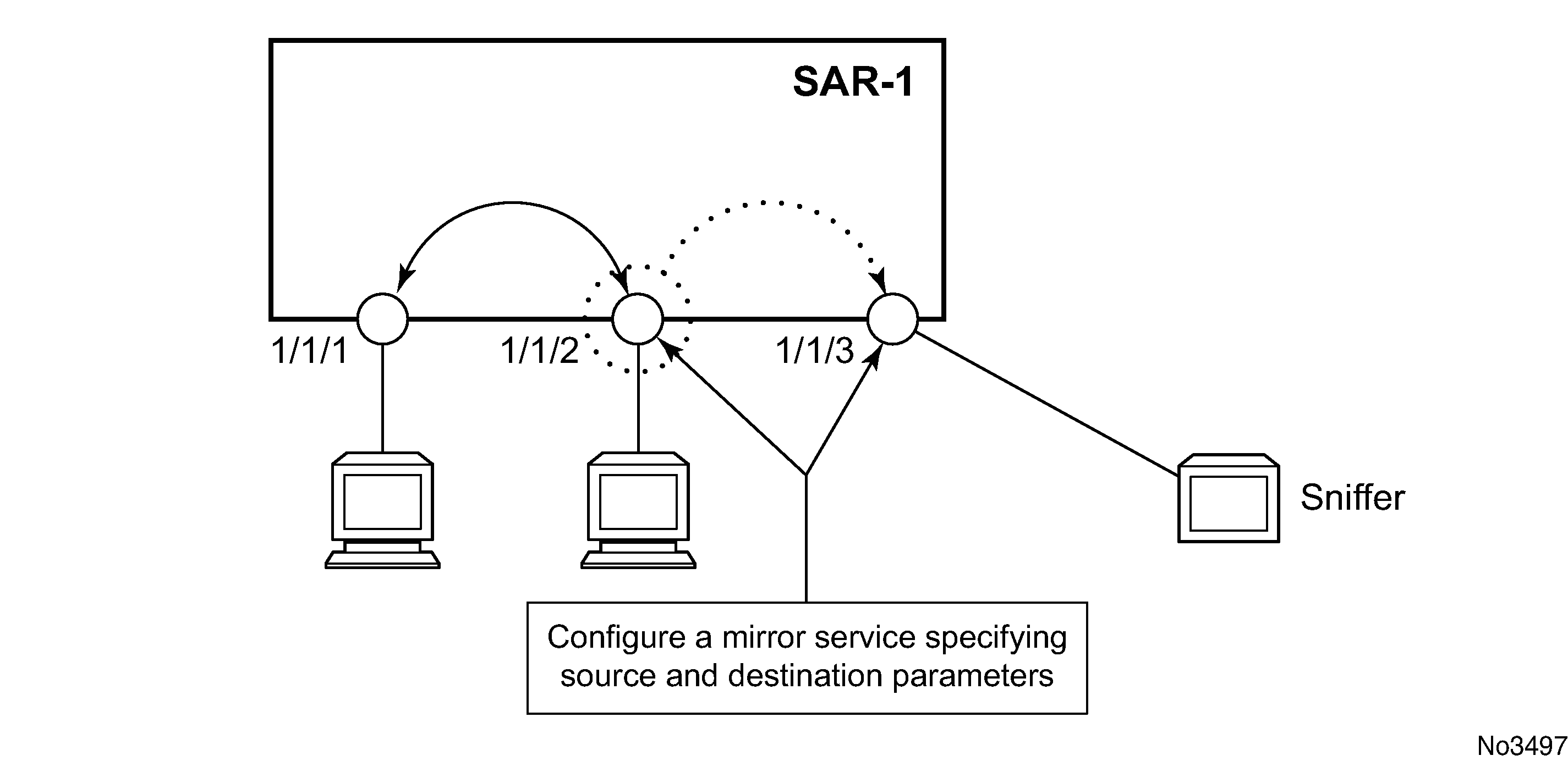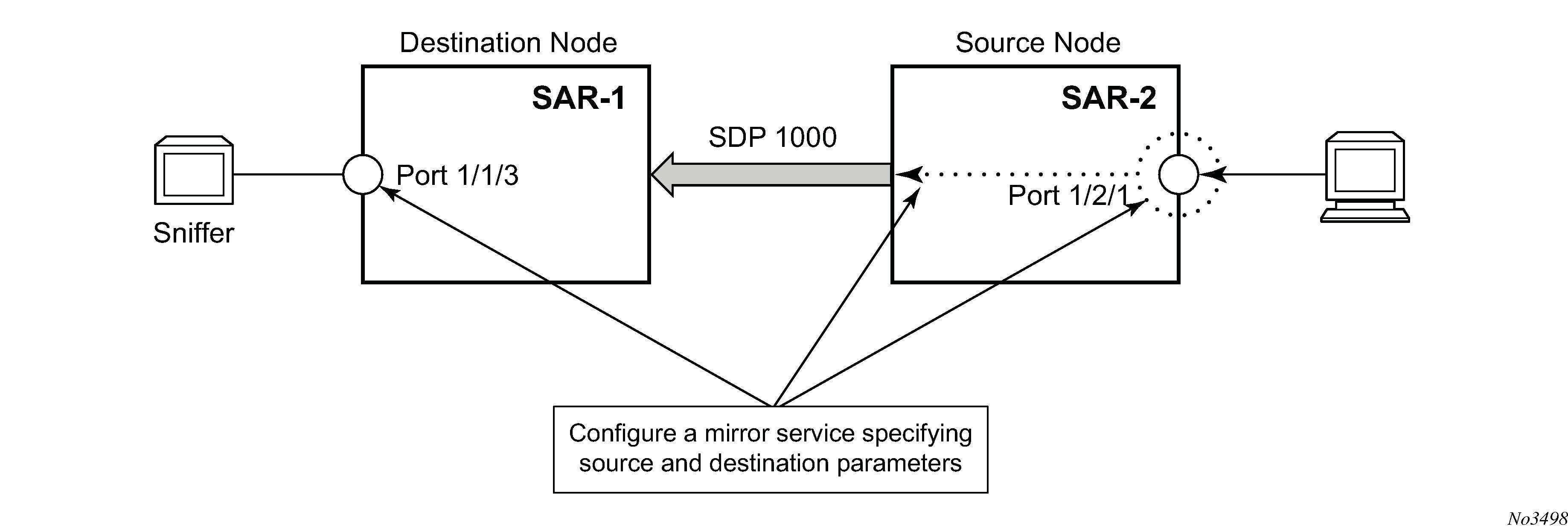Configuring mirroring is similar to creating a unidirectional service. Mirroring requires the configuration of:
mirror source — the port, ports, or MAC filter from which traffic is to be mirrored
mirror destination — the location to send the mirrored traffic, where the sniffer will be located
Figure: Local Mirroring Example shows a local mirror service configured on a 7705 SAR (SAR-1).
Port 1/1/2 is specified as the source. Mirrored traffic ingressing and egressing this port will be sent to port 1/1/3.
SAP 1/1/3 is specified as the destination. The sniffer is physically connected to this port. Mirrored traffic ingressing and egressing port 1/1/2 is sent here. SAP, encapsulation requirements, packet slicing, and mirror classification parameters are configured for the destination port. SDPs are not used in local mirroring.
Figure: Local Mirroring Example
Figure: Remote Mirroring Example shows a remote mirror service configured with SAR-2 as the mirror source and SAR-1 as the mirror destination. Mirrored traffic ingressing and egressing port 1/2/1 (the source) on SAR-2 is handled in the following ways.
Port 1/2/1 is specified as the mirror source port. Parameters are defined to select specific traffic ingressing and egressing this port.
Destination parameters are defined to specify where the mirrored traffic will be sent. In this case, mirrored traffic will be sent to a SAP configured as part of the mirror service on port 1/1/3 on SAR-1 (the mirror destination).
SAR-1 decodes the service ID and sends the traffic out of port 1/1/3.
The sniffer is physically connected to port 1/1/3. SAP, encapsulation requirements, packet slicing, and mirror classification parameters are configured for the destination port.
